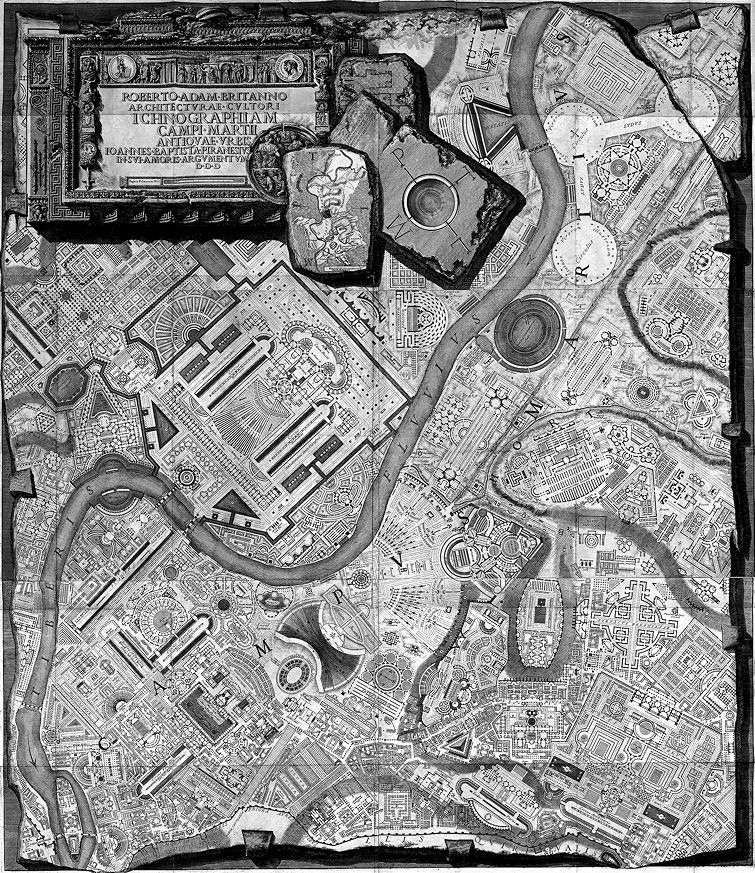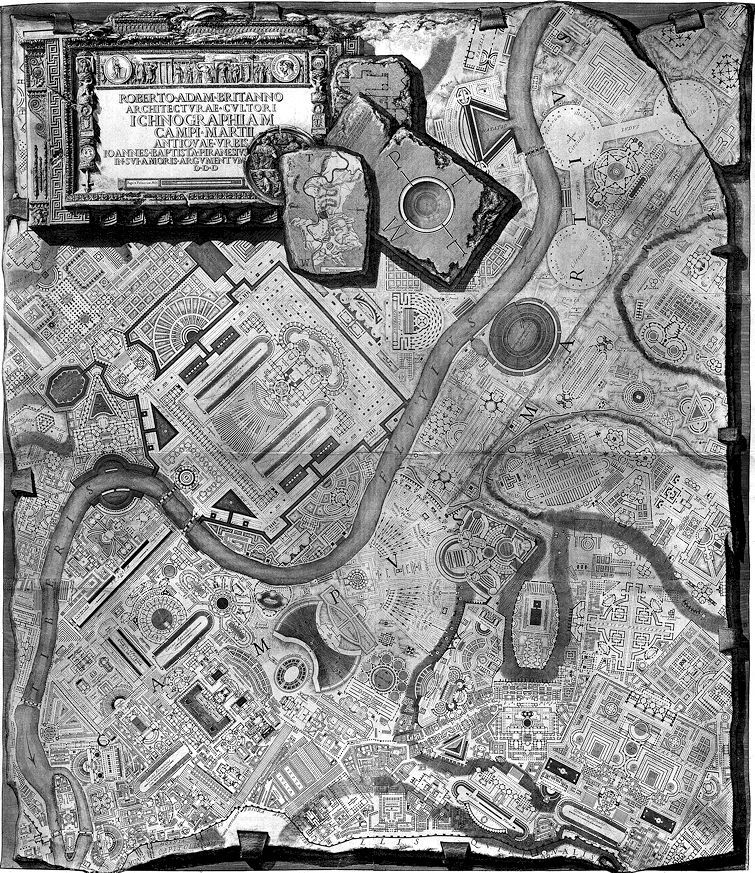piranesi |
1983 |
|
|
| Piranesi's vast reconstructed plan, or Ichnographia, in his treatise Il Campo Marzio dell'Antica Roma of 1762 appeared at a key point in his theoretical and artistic development. Although this plan has recently been interpreted as a deliberate gesture of irrationality by the artist in reaction to contemporary tendencies in architectural design during the mid 18th century, the Ichnographia should, in fact, be read as a positive affirmation of confidence in the creative powers of the imagination.1 It is nothing less than a visual exhortation to modern architects to give full vent to creative licence through experiment in emulation of the ancient Romans. In this respect, therefore, the Ichnographia represents an artistic credo in defence of variety and formal complexity as opposed to the inflexible mentality and restrictive belief in simplicity, as Piranesi saw it, of avant-garde theorists such as Laugier, Winckelmann and their followers.2 If this monumental urban capriccio, therefore, is studied within the context of Piranesi's artistic development, such a positive Utopia should come as no surprise. On the contrary, the Ichnographia represents the logical outcome of certain deeply-rooted ideas first introduced some twenty years earlier by Piranesi in the Dedication of his Prima Parte di Architetture e Prospettive of 1743 on the threshold of an architectural career. |
|
|
1 M. Tafuri, G. B. Piranesi. L'Architettura come «Utopia Negativa», «Angelus Novus», n. 20, gennaio 1971, pp. 89-127, republished as Giovan Battista Piranesi. L'utopie negative dans l'arcbitecture, «L'Architecture d'aujourd'hui», n. 184, mars/avril 1976; In., Progetto e Utopia. Architettura e Sviluppo Capitalistico, Bari 1973, pp. 16-23. Professor Tafuri develops certain ideas from the above and extends them further in II complesso di Santa Maria del Priorato sull' Aventino: «furor analiticus» in the exhibition catalogue Piranesi: Incisioni, Rami, Legature, Architetture (ed. A. Bettagno), Fondazione Giorgio Cini, Venice 1978, pp. 78 if.
|
|
|
|
|
|
Quondam © 2021.10.23 |

